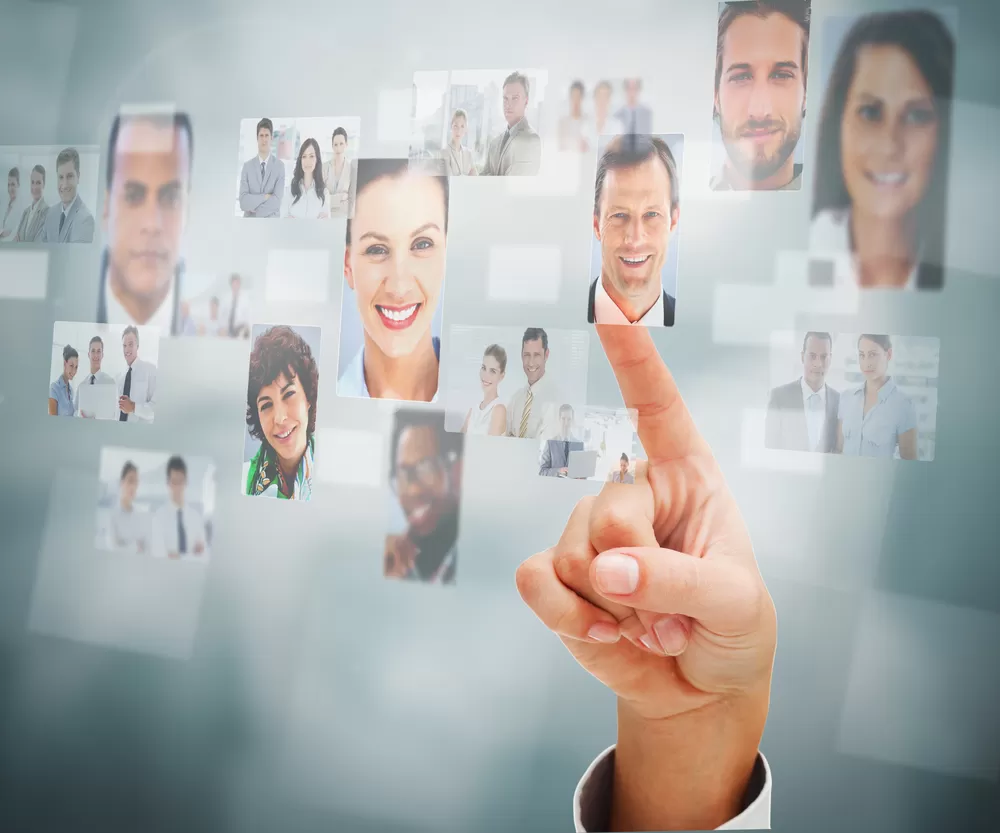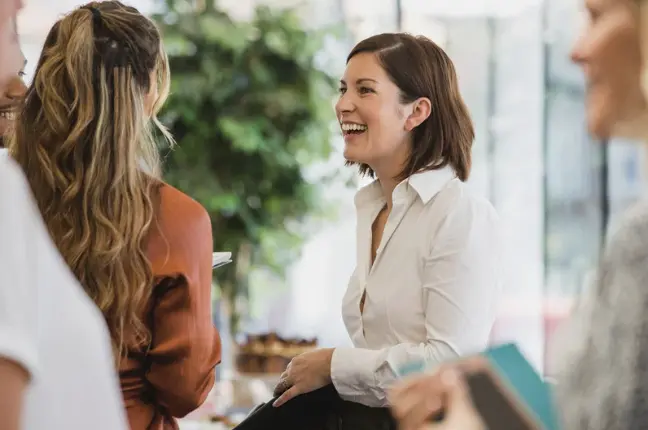Most modern businesses use some kind of Human Resources (HR) software to assist with managing employees. HR software simplifies and optimizes human resources management in ever evolving ways. By selecting an up to date HR software solution that works well with your business operations, your company can best manage its talent, keeping employees happy and driving productivity.
If you’re familiar with HR software and are looking to compare top vendors in the industry, visit our HRIS software vendor list page, or explore our page on the best HRIS software for more insights.
What is HR Software?
Any business software that helps to manage employee information and HR related tasks can be considered HR software. HR software systems assist with managing people, automating manual tasks, and keeping information orderly.
HR software naturally saves labor time for managers and HR staff through automation, but it also assists with HR processes that allow for better planning, budget management, and decision making.
HR software makes it possible to see, for example, how many employees are needed at certain times of year based on historical data so that recruitment resources can be allocated and mobilized accordingly. There are a myriad of other ways that a company may benefit from relying on software rather than faulty and disorganized paper records.
The Different Types of HR Software
There are many different types of HR software that can perform a variety of HR tasks. Some solutions are comprehensive, encompassing most or all of the functions of HR management. Other solutions are specialized and offer assistance with only one or two HR tasks.
Still other solutions are flexible and offer help with core HR administrative tasks like managing a database, with the option to add modules that can assist with things like time and attendance tracking and self-service as desired.
HR software includes, but is not limited to:
- Human Resources Information Systems (HRIS)
- Human Resources Management Systems (HRMS)
- Human Capital Management (HCM)
- Applicant Tracking Systems (ATS)
- Payroll Systems
On-Premises HR Software
On-premises HR software is software that is installed on individual computers and operates within a small network within an organization. The software can only be accessed and used from the computers that it has been installed on. While this may be secure and lower in cost than cloud-based software, it’s difficult to update and inconvenient for most organizations.
Cloud Based HR Software
Most HR software that is used in organizations today is cloud based. Cloud based HR software can be called up on devices that have internet access using logins, allowing for greater flexibility and mobility. This type of access is especially convenient for mobile workforces, but can also allow employees in any industry to access their own personal information and make changes if self-service options are in place.
Features of HR Software
HR software features can vary from system to system, but often include:
Core HR (Personnel Tracking) |
|---|
| Employee database |
| Job information |
| Current and historical salary data |
| Full time/part time status |
| Employee availability |
| Employment anniversaries |
Time and Attendance |
|---|
| Workforce scheduling |
| Time tracking |
| Absence management |
| PTO and sick time monitoring |
| Kiosks and/or biometric time clocks |
Payroll |
|---|
| Salary tracking |
| Bonuses |
| Paycheck calculations |
| Tax withholdings and garnishments |
| Tax filing and reporting |
| Direct deposit |
| Reporting |
Employee Self-Service |
|---|
| Employee access to personal information |
| Benefits enrollment access |
| Time off requests |
| Payroll information |
| Company announcements |
Benefits Administration |
|---|
| Employee access to personal information |
| Insurance information |
| 401(k) information and enrollment |
| Life events management |
| Wellness programs |
| Carrier feeds (electronic data interchange) |
Performance Review |
|---|
| Competencies |
| Goal setting |
| Employee feedback |
| 360-degree reviews |
| Annual reviews and increases |
Applicant Tracking |
|---|
| Job requisitions |
| Job postings |
| Job board integrations |
| Screening and background checks |
| Candidate database |
| Interview management |
| Onboarding |
Learning Management |
|---|
| Certification management |
| eLearning management |
| Assessment tools |
| Training administration |
| Gamification |
Our 2025 Preferred HR Software Partners
Benefits of HR Software
The benefits of HR software can vary widely depending on the type of software that’s selected and the company’s characteristics. The main universal advantage is the labor time that’s saved doing mundane administrative tasks. This time can be redirected towards more lucrative or productive tasks that help to better the organization.
Depending on the software that’s selected and the way it’s used, companies may see a decrease in errors with the elimination of double data entry and an improvement in organization with the introduction of electronic records. Additionally, there may be space and cost savings due to minimized use of paper, paper clips, ink, and associated supplies.
Beyond these wide-ranging benefits, companies may see benefits that stem from the specific type of software or modules that were chosen, like an improvement in succession planning and employee development after implementing a robust learning management system.
Companies that select an all-encompassing HR software solution may see a number of benefits that occur across several areas of the organization. Processes may be streamlined and it may be easier to cross reference data pertaining to different elements of HR that were siloed before implementing a comprehensive system.
Benefits of Managing Payroll
Payroll is often the biggest organizational expense, so managing it effectively using HR software can save time and trouble while helping to avoid employee dissatisfaction caused by errors.
Integrating time and attendance software and scheduling with payroll functions can help a company to better control labor costs, overtime, and compliance issues like number of hours worked by minors. Analytics based on these types of integrations can enable better real-time decision making and planning.
Self-Service Options Benefits
Employee and manager self-service functionality can help to improve communications while boosting autonomy within the company. This is becoming a popular HR software module, particularly when the feature is mobile optimized.
Allowing employees to access information and schedules, submit changes and time-off requests, and even take charge over their own development and training can improve satisfaction and productivity while saving management time. Allowing managers to perform tasks and address time-off requests while on the go can improve operations and make for more timely actions.
Improvements in Recruitment
Recruitment is becoming more employee-centric and digitized, so using HR software to help with recruitment can assist with attracting top talent. HR software often integrates with top job boards and social media sites to post jobs where the best employee candidates will see them. HR software may also assist with the interviewing and onboarding processes for more streamlined hiring.
HR Software and Your Company’s Future
HR software provides companies with tools that can aid in flexibility. This can be instrumental in adapting to the following universal shifts in the way that many workforces operate:
- From a hierarchy to a flatter structure with an emphasis on teams
- Employee-centric development, rather than scheduled classroom-style learning
- Using analytics to recruit strategically versus hiring reactively
- Working and connecting remotely as opposed to strictly in office or face-to-face
- Developing a big-picture focus that cross-references financial factors with HR
- Catering to part-time, temporary, contract, and gig workers as opposed to only full time staff
- Providing continuous feedback, coaching, and recognition instead of annual appraisals
- Promoting transparency as a vehicle for fairness and increased diversity
Flattened Organizational Hierarchies
Hierarchies in which top management passes down goals to lower and lower levels of management until those goals are broken down into specific tasks for front-line workers no longer jive with the fast pace of modern life.
Smart organizations utilize HR software to flatten hierarchies, giving workers more freedom to set their own goals that aren’t at a disconnect because of layers of middlemen. Managers can approve or revise goals and workers can submit updates regarding their progress.
Employee-Powered Development
Self-service portals and eLearning applications provide workers with the ability to control their own development. By taking advantage of these tools, employers enable their staff to update their skills and acquire new skills that can continuously better the organization.
By using more interactive learning tools, rather than classroom-style lectures, retention of information is often improved. When employees feel responsible for their own learning, they are likely to be more engaged than when they feel forced into a training course.
Data-Driven Strategic Recruiting
Hiring has changed perhaps more dramatically than any other area of human resources in the past few years. With the economy on an upswing and the number of workers retiring outpacing the number of new workers entering the workforce, recruitment has increasingly shifted in favor of the employee.
Data-driven recruiting can help companies figure out their most effective sources for finding candidates and can assist with narrowing down the candidate pool to the best and brightest. This can offer some protection against turnover, while also improving time to hire rates.
Remote Connectivity
Allowing employees to collaborate on projects from remote locations and communicate with one another instantly can be advantageous for many different types of companies. HR software can facilitate these types of connections while also helping to track time spent so that employees are being compensated appropriately according to labor laws.
Big-Picture Focus
HR software is continuously improving to include better integration with other workforce software solutions. By cross referencing HR data with financial data, businesses can better see the whole picture of organizational health. By viewing information side-by-side, it’s easier to spot correlations between labor and productivity, turnover and profit, and more.
Embracing Contract Workers
Many companies are seeing benefits in contracting workers that will only be with the company for a short time or a specific project. Gig workers, contractors, temporary workers, and part-time workers all break from the image of the archetypical loyal full-time worker, but catering to these workers has its advantages. These types of workers often offer specialties that can be helpful, without the commitment.
HR software makes it easier to calculate compensation and communicate with workers outside of the normal office hours or location.
Continuous Feedback
Continuous feedback is the demand of a workforce that operates in accordance with a culture of rapid change. The annual appraisal is becoming obsolete, workers simply need to be coached or recognized quickly to be able to keep up with expectations.
Many HRIS solutions provide performance management tools that make it much easier for managers to provide continuous feedback. Performance management tools may include alerts that tell managers when an employee has completed a task, 360 degree reviews that allow peers and customers to submit feedback, and messaging options that allow managers to reach out to employees instantly.
Transparency Simplified
The “hush hush” culture surrounding pay and promotions is going away in favor of a more transparent culture. HR software allows employers to post starting salaries, merit increase projections, and promotional opportunities for all to see.
Transparency makes it tougher to discriminate for arbitrary reasons, so it often leads to greater fairness and diversity. When a company chooses to make salaries public, it lets workers know that they can expect fairness from the company.
Our 2025 Preferred HR Software Partners
Looking To Get a HR Software Solution for a Specific Industry?
We have great information for all types of businesses looking for HRIS solutions. Take a look at these excellent industry-specific HR software articles.
Industry:
- Retail Businesses
- Construction
- Manufacturing
- Restaurants
- Hospitals
- Banks
- Large Corporations
- Small Businesses
- Start-Ups
- Nonprofit Organizations
- Real Estate Companies
- Schools
- Government Agencies
Summary
HR software can change the way that a company works from the inside. Ideally, HR software should fit with company culture and help to promote the visions that the company values most. For those looking for free HR software options, click here.
Find Your Perfect HR Software
If you have decided that HR software is right for your company, we can help you get started with the selection process. You can call to receive advice and suggestions from our HRIS software experts or you can browse through our HR software vendors to begin researching for yourself.












